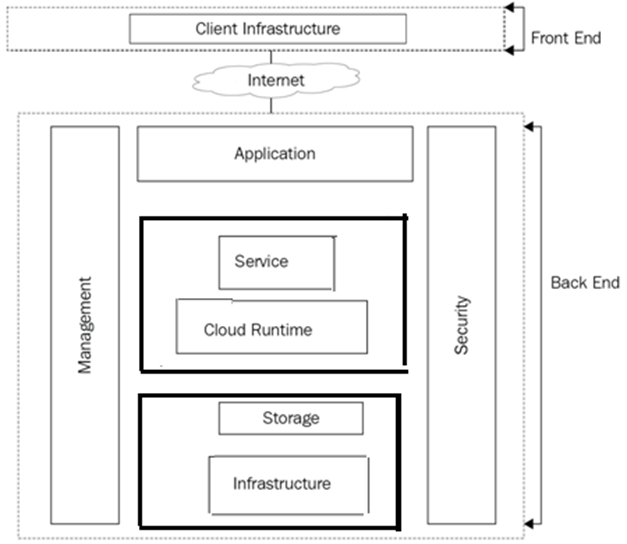Home »
Cloud Computing
Cloud Ecosystem
Cloud Ecosystem: In this tutorial, we will learn what is cloud ecosystem, how a cloud ecosystem works, the benefits of a cloud ecosystem, the architecture of the cloud ecosystem, etc.
By IncludeHelp Last updated : June 04, 2023
Cloud Ecosystem
A cloud ecosystem is a dynamic system of interdependent elements, all of which work together to make cloud services possible. In nature, an ecosystem consists of objects that are linked and work together that are living and non-living. The ecosystem consists of hardware and software in cloud computing, as well as cloud clients, cloud developers, consultants, integrators, and collaborators.
Cloud computing offers revolutionary benefits: streamlined offerings for self-service, fast-provisioning services, competitive pricing, and more. Such benefits serve several business needs, such as analytics and analytics, collaborative capabilities, and the rapid growth of new technologies and facilities.
How a cloud ecosystem works?
A public cloud provider is the nucleus of a cloud environment. It may be an IaaS provider like Amazon Web Services (AWS) or a vendor like Salesforce for SaaS. Tech companies that use the anchor platform of the provider, as well as consultants and companies that have formed strategic partnerships with the anchor provider are radiating out from the center of the cloud. Since these businesses overlap, there is no vendor lock-in, making the environment more dynamic. AWS, for instance, is the core of its ecosystem, but it is also a part of the ecosystem of the Salesforce. Salesforce runs a variety of its services on the infrastructure of AWS, and Salesforce clients can access parts of AWS, such as its Simple Storage Service, through devices called connectors.
Benefits of a cloud ecosystem
Aggregating data and evaluating how each component of the system influences the other component is often easier to aggregate. For instance, it becomes possible to analyze trends across an entire patient population if an environment consists of patient records, smart device logs and healthcare provider records. Cloud deployment model analysis is a cloud environment can be established and recorded, resulting in a deliverable series.
- To define the deployment analysis is used to deployment model type.
- Cloud readiness evaluation - evaluating the skills to handle and organize the implementation of cloud-enabled solutions
- The vision of cloud adoption, outlining our governance plan, planned market performance, and business cases that highlight projected advantages. To construct a step-by-step plan to frame the cloud expedition in an ideal sequence. Developing sustainable guidance system will initiate and guide a transformative cloud strategy.
- Use cases building a set of case studies and scenarios to guide the analysis, selection and prioritization of candidate workloads "cloud-friendly
- Architectural considerations - evaluating the architecture of knowledge (data, structure and deployment standards) and application architecture (applications, structure and development standards).
The architecture of the Cloud Ecosystem
The following figure shows the cloud ecosystem architecture.

The main actors of the Cloud Ecosystem are as follows -
Cloud Service User
- Cloud service user (CSU) is an individual or company who uses cloud services that are distributed.
- End-users may be individuals, machines, or apps.
Cloud service Provider
- A company that provides and manages the cloud services provided.
Cloud Service Partner
- An entity or organization which supports the creation of the service offer by a partner.